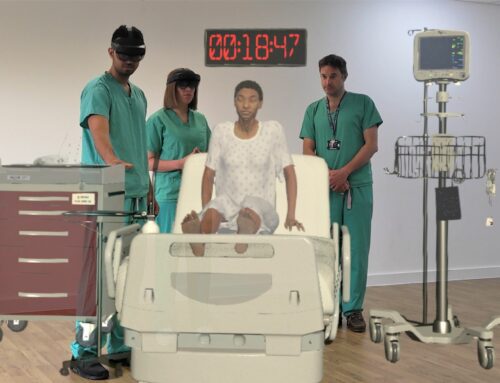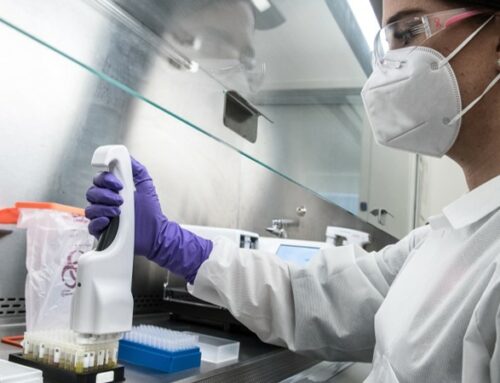The COVID-19 Pandemic has accelerated the development and adoption of telehealth and digital healthcare technology, changing the way patients engage with their healthcare. We had the opportunity to talk to Zach Zettler, president of the patient communications company Updox, about their recent patient survey and how the healthcare industry can evolve to meet changing patient expectations.
Updox recently released results of its latest patient survey. What did the survey aim to explore / uncover?
It’s no secret that virtually every aspect of the healthcare industry has been forced to change in the face of COVID-19, including the patient experience. In light of that, we wanted to explore how patient expectations have evolved and what they now expect from their providers including everything from how they prefer to communicate to what their priorities are when it comes to healthcare and what their provider offers. By conducting this survey through the Harris Poll, we were really able to dive deeper into these expectations and how practices can meet them.
In addition to convenient communications, the survey found that patients also believe that user-friendly technology is important for a good patient experience. Is this a shift in what we may have heard or seen from patients pre-pandemic?
It absolutely is. Throughout the pandemic, healthcare providers have implemented technology solutions ranging from video chat to virtual waiting rooms in order to continue providing effective care while following social distancing guidelines and other COVID-19 safety protocols. For example, prior to the pandemic only 18% of practices offered telehealth, but as of July of last year, over 93% offered it – and the use of telehealth has now stabilized at 38 times higher in 2021 than it was in early 2020.
Patients have become accustomed to these conveniences, and while in-person healthcare visits are on the rise again, many have stated pretty clearly they do not want to revert back to the healthcare delivery model that was the norm in 2019.
You mentioned the survey also asked consumers how their expectations of their healthcare provider have changed as a result of COVID-19. What were some of those results?
While we know the last 18 months have changed things for healthcare, this survey made it clear that patient expectations have also evolved, especially as it relates to what they want from their healthcare provider.
For example, when it comes to having a good patient experience, 55% of survey respondents cited convenient communications like secure text and patient messaging as being most important, closely followed by user-friendly technology at 51%.
In addition, half of respondents cited secure information sharing as a key component of a good patient experience and 39% of respondents expect their provider to conduct communications virtually, such as via video calls, texting or emails. Telehealth also continues to be a priority for patients and 41% expect their healthcare provider to offer this option moving forward.
As a result of these findings, how can the healthcare industry further evolve to meet these changing patient expectations? What are some best practices for providers to take to further increase patient satisfaction?
It’s important for healthcare providers to offer convenient communication options, which means connecting with patients where they are most — on their mobile devices. Providing options like online scheduling and automated reminders can help increase patient satisfaction while also reducing the time staff spends on the phone. These solutions can also cut down on no-shows, which can improve revenue flow, since missed appointments cost the U.S. healthcare industry an estimated $1.5 billion per year.
In addition, continuing to offer telehealth beyond the pandemic is an important best practice. Before the pandemic, only 18% of providers offered the service, but now, 41% of patients expect this moving forward. Telehealth not only offers the ability to communicate conveniently between staff and patients, but also boosts patient satisfaction and practice productivity.
Other best practices include offering solutions such as online bill pay, virtual waiting rooms, and incorporating e-forms and paperless communications into the practice. One of the most important things to remember is that as patient expectations change and evolve, so must the healthcare practice.
About the Zach Zettler
Zach Zettler, president of Updox, an EverCommerce solution, is a proven software industry executive with more than 25 years of successful sales, marketing, and operations leadership experience with a focus on driving innovation and growth in the health & human services software space. Zettler previously held senior business development and operational leadership positions with other fast-growing technology companies.
Forward-Looking Statements: This article contains forward-looking statements, including statements about expected trends in the healthcare industry. These statements are neither promises nor guarantees, but involve known and unknown risks, uncertainties and other important factors that may cause actual results, performance or achievements to be materially different, including the factors described in EverCommerce’s filings with the SEC. Any such forward-looking statements represent management’s estimates as of the date of this article. While EverCommerce may elect to update such forward-looking statements at some point in the future, it disclaims any obligation to do so, even if subsequent events cause its views to change.












